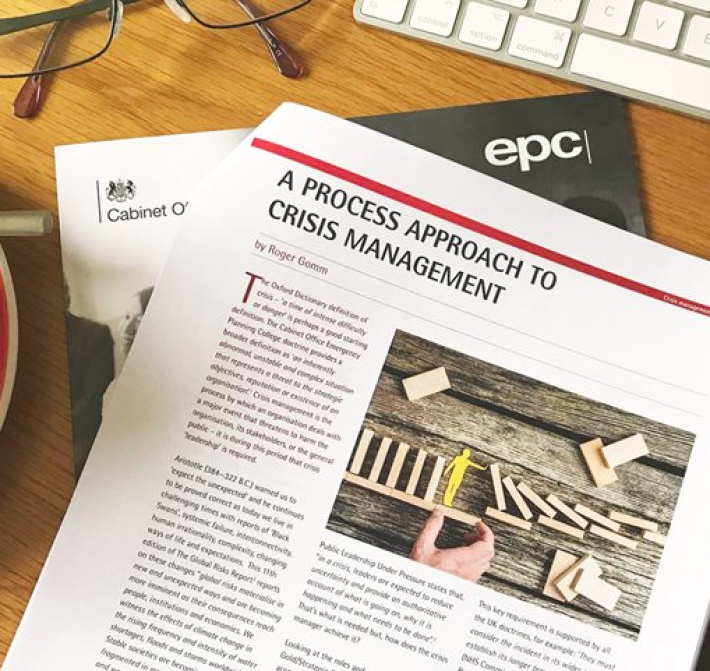
Our Associate, Roger Gomm, recently published an interesting article in Alert - the Journal of the Institute of Civil Protection and Emergency Management. It's a really useful introduction to EPC's 'way and purpose'.
Download: Roger-Gomm-Article-Alert-Journal.pdf
Roger’s purpose seems to reflect a truism; management literature is stronger on the 'what' crisis managers need to do, than it is on 'how' they might do it.
So he takes a toolkit approach, using tools that (as he points out) are hallmarks of the EPC approach to this discipline. He starts with the primacy of shared situational awareness and how to create and maintain it. He then goes on to discuss the situation, direction, action approach. First, analyse the scale, duration and impacts of a crisis. Then decide on your course of action, implement it, record it and learn from it. This is, in the smallest of nutshells, the EPC 'doctrine' of crisis management.
Don’t be misled by the title, though. 'Process' helps, simplification helps and some reductionism is necessary. That is certainly true. But crisis management is still about managing complexity in volatile circumstances. This is the domain of the strategic and the creative – where the right decision-support tools need to be applied by critical thinkers.
Roger ends with some useful thoughts on leadership. Crisis leadership skills don’t always 'come with the rank'. The skill-set is not usually that of running an organisation’s BAU. Skills need to be developed through training and practice. So, as far as the crisis management tool set is concerned, Roger’s article is a useful introduction to the EPC 'way and purpose'.